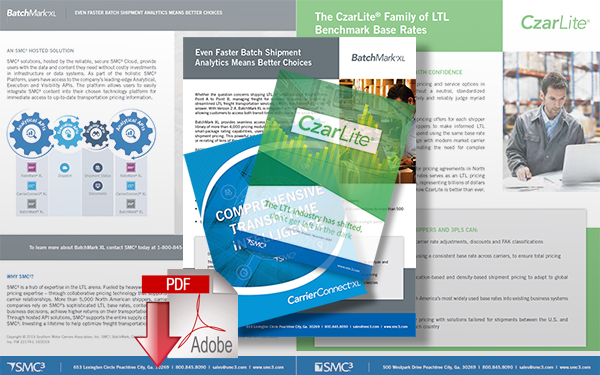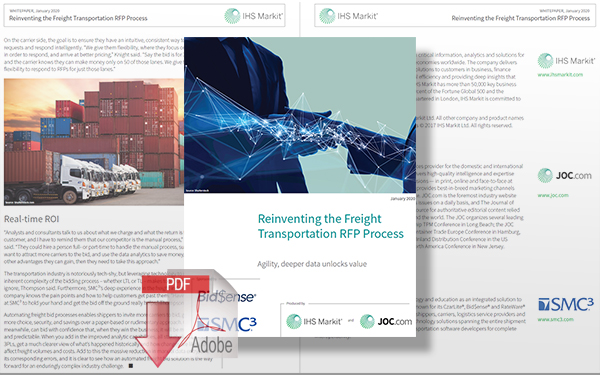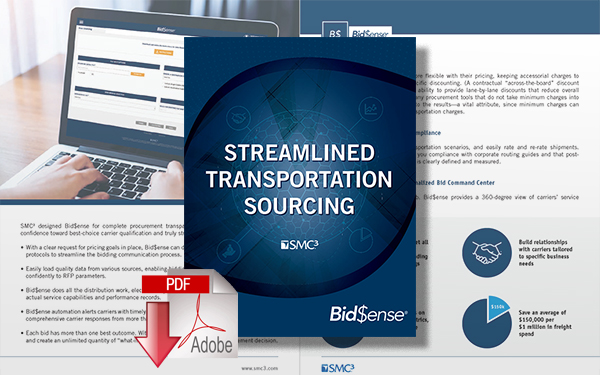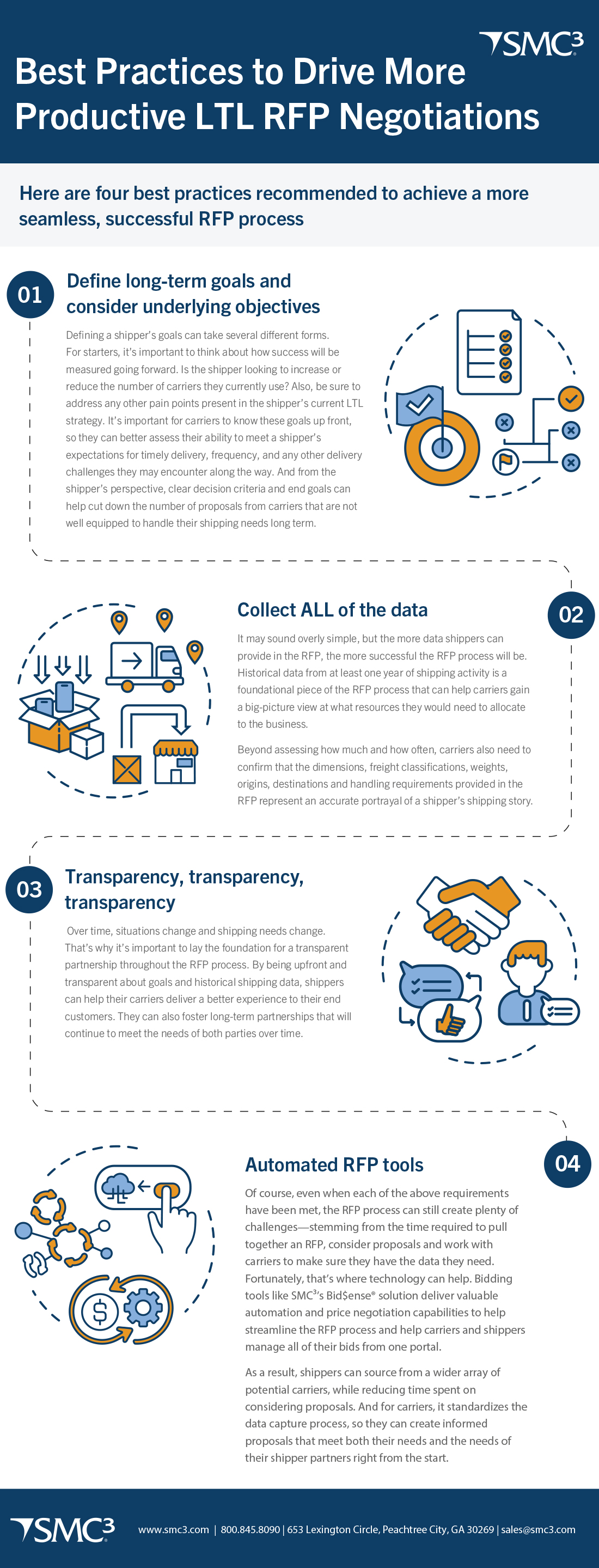Best Practices to Drive More Productive Less-than-Truckload Request for Proposal Negotiations

Putting together a proposal, especially in the carrier’s case - can quickly begin to feel like an overwhelming experience, in this article we take a closer look at how both carriers and shippers can work together to drive more productive and efficient RFP processes.
Four Steps to Help Drive Success
Over the last year, the pandemic has changed many aspects of the transportation sector in unexpected ways.
From the sharp increase in ecommerce activity to changes in the amount of freight moving through specific shipping lanes, driver shortages, and the resulting capacity crunch, it’s no surprise many carriers and shippers are seeking to redefine the terms of their partnerships to account for this “new normal.”
Yet, conducting a new transportation request for proposal (RFP) - or putting together a proposal, in the carrier’s case - can quickly begin to feel like an overwhelming experience.
As a part of the SMC³ LTL203: LTL Carrier Pricing and Costing course, Ryan Poynter, SVP of LTL carrier relations and pricing at GlobalTranz, John Kruzan, director of client success at SMC³, and Dave Woodwyk, VP of pricing and yield management at USF Holland, joined students for a closer look at how both carriers and shippers can work together to drive more productive and efficient RFP processes.
Here are four best practices recommended to achieve a more seamless, successful RFP process.
1. Define long-term goals and consider underlying objectives - All too often, the conversation quickly turns to price, Poynter says.
“I always try to steer RFPs away from price, shippers will say they want to save 10 percent - but why is that? Once we look a little deeper, we might be able to figure out what problem they are actually trying to solve and help them create synergies to get there.”
Defining a shipper’s goals can take several different forms. For starters, it’s important to think about how success will be measured going forward. Is the shipper looking to increase or reduce the number of carriers they currently use?
Also, be sure to address any other pain points present in the shipper’s current LTL strategy. It’s important for carriers to know these goals upfront, so they can better assess their ability to meet a shipper’s expectations for timely delivery, frequency, and any other delivery challenges they may encounter along the way. And from the shipper’s perspective, clear decision criteria and end goals can help cut down the number of proposals from carriers that are not well equipped to handle their shipping needs long term.
2. Collect ALL of the data - It may sound overly simple, but the more data shippers can provide in the RFP, the more successful the RFP process will be.
According to Woodwyk, historical data from at least one year of shipping activity is a foundational piece of the RFP process that can help carriers gain a big-picture view of what resources they would need to allocate to the business;
“Shipment level data is a key component, most industries have some degree of seasonality to them and by seeing a year’s worth of data, we can begin to identify all the dips and peaks in a carrier’s volume.”
Beyond assessing how much and how often, carriers also need to confirm that the dimensions, freight classifications, weights, origins, destinations and handling requirements provided in the RFP represent an accurate portrayal of a shipper’s shipping story.
For this reason, creating summaries of key freight data points for fear of overwhelming a carrier is the wrong approach to take when pulling together an RFP.
The more data carriers have to work with, the more likely they are able to provide an accurate estimate of cost and price on the first attempt. Even photo submissions of products on pallets can help a carrier more accurately decide how much space on their trucks they would need to allocate to your business. Without this information, carriers are forced to make educated guesses. Often, these educated guesses will lead to renegotiations and general rate increases (GRIs) later to bring prices back in line with true carrier costs.
3. Transparency, transparency, transparency - Over time, situations change and shipping needs to change. That’s why it’s important to lay the foundation for a transparent partnership throughout the RFP process. By being upfront and transparent about goals and historical shipping data, shippers can help their carriers deliver a better experience to their end customers. They can also foster long-term partnerships that will continue to meet the needs of both parties over time. Kruzan says;
“Transparency is really the key to helping both [shippers and carriers] meet their goals simultaneously, it introduces valuable efficiencies and empowers carriers to become real partners in a shipper’s business.”
4. Automated RFP tools - Of course, even when each of the above requirements has been met, the RFP process can still create plenty of challenges - stemming from the time required to pull together an RFP, consider proposals and work with carriers to make sure they have the data they need. Fortunately, that’s where technology can help. Bidding tools like SMC³’s Bid$ense® solution deliver valuable automation and price negotiation capabilities to help streamline the RFP process and help carriers and shippers manage all of their bids from one portal.
As a result, shippers can source from a wider array of potential carriers, while reducing time spent on considering proposals. And for carriers, it standardizes the data capture process, so they can create informed proposals that meet both their needs and the needs of their shipper partners right from the start.
Learn More about RFP Innovation
Want to learn more about the technology at the center of RFP innovation? Learn more about SMC³’s Bid$ense tool and how it can help facilitate more efficient sourcing and pricing negotiations.
The 2021 SMC³ Online Education Hybrid Schedule has been released!
View the full 2021 LTL online education hybrid schedule.
Related Papers
Analyzing and Predicting Freight Transportation Costs
In these 3 resources, BatchMark XL, CarrierConnect XL, and CzarLite, we detail how to ensure accurate freight billing across every carrier agreement, uncover potential freight bill invoice errors, and assist with price negotiation and planning. Download Now!
Reinventing the Freight Transportation RFP Process
In this white paper, we describe how using a tech-enabled freight bid system allows for more freight providers to be considered, greatly improving choice and the ability to tailor your service around more than just price. Download Now!
Bid$ense: Streamlined Transportation Sourcing
This paper details how using Bid$ense leverages SMC³’s lifetime of transportation purchasing knowledge, allowing customers to incorporate pricing, claims ratios, on-time performance, and transit times into their LTL bidding analysis. Download Now!
More SMC³ Resources
Related Article: What Is A Freight Bill Audit, and Why Do You Need One?
Article Topics
SMC3 News & Resources
SMC3 Mercury Gate Case Study - Improving Workflows and Enhancing Efficiency with LTL APIs SMC3: Is Technology a Competitive Advantage in the Modern Supply Chain Industry? Armada’s Prather examines the disconnect between the freight economy and the macro economy at SMC3 JumpStart 2024 SMC³’s Solution to the Logistics Industries Talent Problem 2024 Transportation Rate Outlook: More of the same? Refining LTL API Consumption for Optimal Efficiency and Enhanced Services Regulations Impacting Less-than-Truckload More SMC3Latest in Transportation
Baltimore Bridge Collapse: Impact on Freight Navigating Amazon Logistics’ Growth Shakes Up Shipping Industry in 2023 Nissan Channels Tesla With Its Latest Manufacturing Process Why are Diesel Prices Climbing Back Over $4 a Gallon? Luxury Car Brands in Limbo After Chinese Company Violates Labor Laws The Three Biggest Challenges Facing Shippers and Carriers in 2024 Supply Chain Stability Index: “Tremendous Improvement” in 2023 More Transportation





















